
La Revue blanche was a French art and literary magazine run between 1889 and 1903. Some of the greatest writers and artists of the time were its collaborators.

La Revue blanche was a French art and literary magazine run between 1889 and 1903. Some of the greatest writers and artists of the time were its collaborators.
The Revue blanche was founded in Liège in 1889 and run by the Natanson brothers (Alexander, Thaddeus and Louis-Alfred, aka "Alfred Athis"). In 1891, the magazine moved to Paris where it rivaled the Mercure de France , hence its name, which served to mark the difference with the Mercure's purple cover. During the early years the magazine was associated with Marcel Proust. [1]
Thaddeus's wife, Misia Sert, participated in the launch of the magazine and served as a model for some covers. [2] The critics Lucien Muhlfeld and Félix Fénéon from 1896 to 1903 served as secretaries, as well as Léon Blum himself.
The journal served as a representative for the cultural and artistic intelligentsia of the time. Starting from 1898, at the instigation of Lucien Herr, it contributed to the Dreyfus affair, [3] siding with the captain accused of treason. During this period the magazine developed close relations with Émile Durkheim. [3]
Octave Mirbeau published his Diary of a Chambermaid in serial form in the Revue blanche in 1900.
The Revue blanche disappeared in 1903 after 237 issues. [4]

Valentin Louis Georges Eugène Marcel Proust was a French novelist, literary critic, and essayist who wrote the monumental novel À la recherche du temps perdu which was published in seven volumes between 1913 and 1927. He is considered by critics and writers to be one of the most influential authors of the 20th century.

Symbolism was a late 19th-century art movement of French and Belgian origin in poetry and other arts seeking to represent absolute truths symbolically through language and metaphorical images, mainly as a reaction against naturalism and realism.
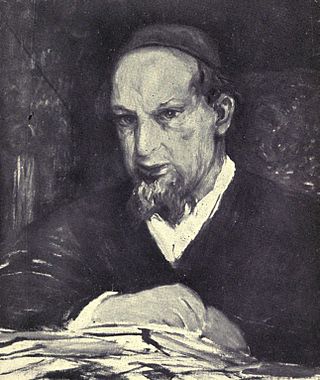
Remy de Gourmont was a French symbolist poet, novelist, and influential critic. He was widely read in his era, and an important influence on Blaise Cendrars and Georges Bataille. The spelling Rémy de Gourmont is incorrect, albeit common.
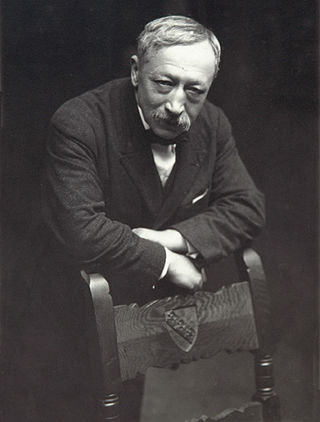
Gustave Kahn was a French Symbolist poet and art critic. He was also active, via publishing and essay-writing, in defining Symbolism and distinguishing it from the Decadent Movement.

Paul Charles Joseph Bourget was a French poet, novelist and critic. He was nominated for the Nobel Prize in Literature five times.

Auguste Émile Faguet was a French author and literary critic.

La Plume was a French bi-monthly literary and artistic review. The magazine was set up in 1889 by Léon Deschamps, who edited it for ten years and was succeeded as editor by Karl Boès from 1899 to 1914. Its offices were at number 31 rue Bonaparte, Paris. From its beginning, famous artists such as Willette, Forain, Eugène Grasset, Toulouse-Lautrec, Maurice Denis, Mucha, Gauguin, Pissarro, Félicien Rops, Signac, Seurat, and Redon contributed to it. One of its most famous issues is that devoted to Le Chat noir. The magazine supported the symbolist art movement.
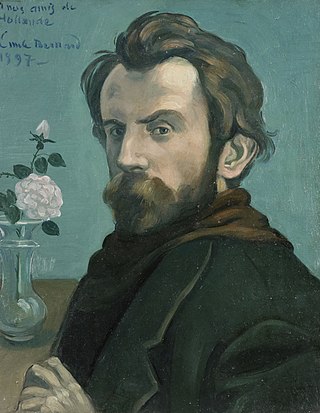
Émile Henri Bernard was a French Post-Impressionist painter and writer, who had artistic friendships with Vincent van Gogh, Paul Gauguin and Eugène Boch, and at a later time, Paul Cézanne. Most of his notable work was accomplished at a young age, in the years 1886 through 1897. He is also associated with Cloisonnism and Synthetism, two late 19th-century art movements. Less known is Bernard's literary work, comprising plays, poetry, and art criticism as well as art historical statements that contain first-hand information on the crucial period of modern art to which Bernard had contributed.
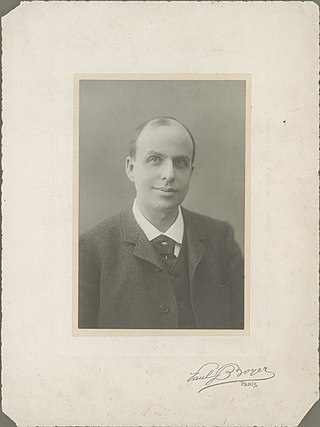
Mayer André Marcel Schwob, known as Marcel Schwob, was a French symbolist writer best known for his short stories and his literary influence on authors such as Jorge Luis Borges, Alfonso Reyes, Roberto Bolaño and Patricio Pron. He has been called a "precursor of Surrealism". In addition to over a hundred short stories, he wrote journalistic articles, essays, biographies, literary reviews and analysis, translations and plays. He was extremely well known and respected during his life and notably befriended a great number of intellectuals and artists of the time.

Jacques-Émile Blanche was a French artist, largely self-taught, who became a successful portrait painter, working in London and Paris.
The Mercure de France was originally a French gazette and literary magazine first published in the 17th century, but after several incarnations has evolved as a publisher, and is now part of the Éditions Gallimard publishing group.

Henri Massis was a French conservative essayist, literary critic and literary historian.

Jean-Auguste-Gustave Binet, also known as Binet-Valmer, was a Franco-Swiss novelist and journalist. The trademark element of his style was the almost clinical precision with which he dissected the psychologies and motivations of his characters.

Julia Daudet, born Julia Allard, was a French writer, poet and journalist. She was the wife and collaborator of Alphonse Daudet, mother of Léon Daudet, Lucien Daudet and Edmée Daudet.
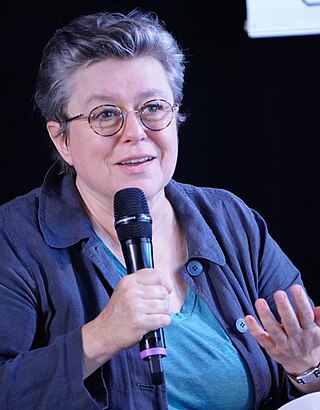
Laure Murat, born 4 June 1967, in Paris, is a French historian, writer, and professor at the University of California, Los Angeles.

Louise Faure-Favier was a French writer and aviator. She is considered by some to be the first French woman to work as a professional journalist. She also wrote the first French novel about civil aviation.

Spanish Cavaliers is an 1859 oil-on-canvas painting by Édouard Manet, now in the Musée des beaux-arts de Lyon.

Jacques Bizet was a French physician and businessman best known for his long friendship with novelist Marcel Proust. He was the son of composer Georges Bizet, who died when the boy was three and before his works gained success. His mother was Geneviève Halévy, who became known as a literary hostess.
Justin O'Brien was an American biographer, translator of André Gide and Albert Camus and professor of French at Columbia University.
André Ruyters (1876–1952), surname also as Ruijters in line with Dutch orthography, or Ruÿters, was a Belgian novelist and poet writing in French, and banker. In France during the 1890s and the first decade of the 20th century he was a figure of the literary world, and close friend and correspondent of André Gide. He was one of the founding group of the Nouvelle Revue Française. His French translation of Joseph Conrad's Heart of Darkness, published from 1924 in the Revue des Deux Mondes, was influential from the point of view of Francophone reception of Conrad.